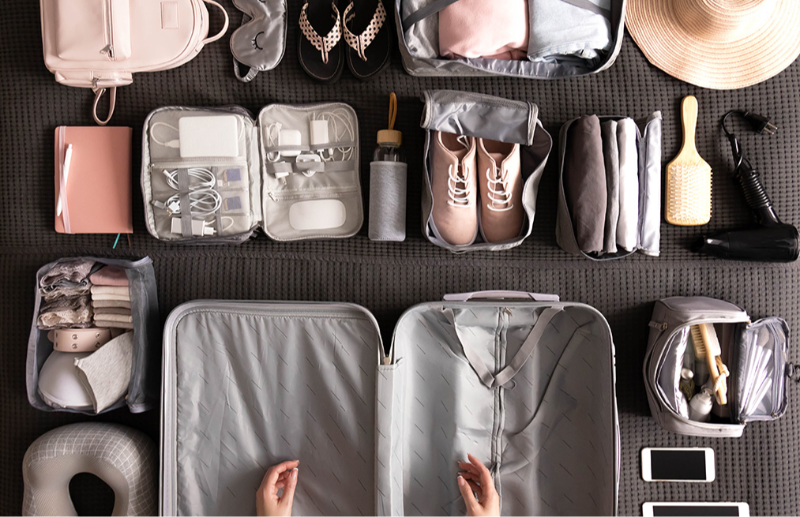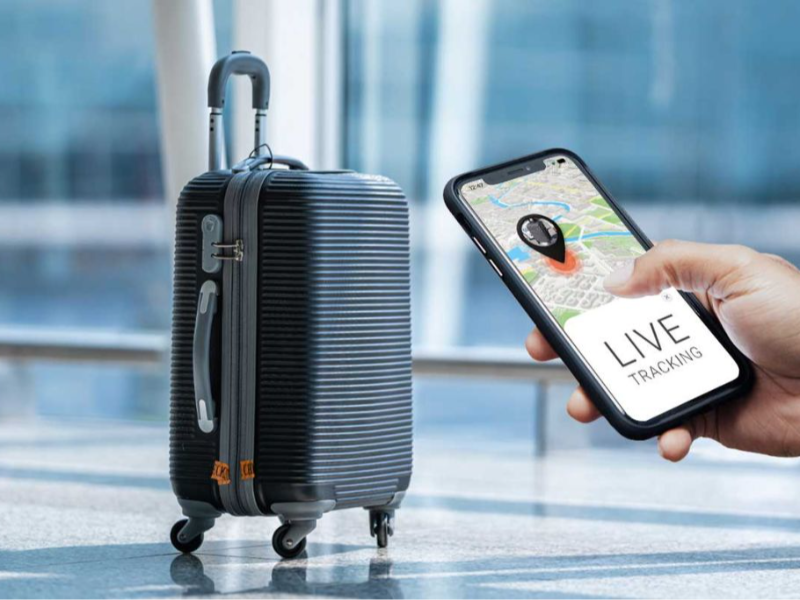
If you’ve had nightmares about lost luggage or faced the stress of searching for a misplaced bag at crowded baggage claim areas, you're not alone. For solo female travelers , these concerns are even more pressing. Enter luggage trackers—compact devices designed to help you keep tabs on your bags no matter where you are in the world.
This guide dives deep into the best luggage trackers available, including the beloved AirTag and Tile Mate, comparing their features, pros, and cons. We’ll also explore their real-world applications, helping you decide which baggage tracker works best for your travels.
What is a Luggage Tracker?
A luggage tracker is a small, lightweight device that provides real-time location updates for your bags. Using Bluetooth connectivity as a primary means of communication, these devices send signals to your phone when nearby. Advanced models, like the AirTag or Tile Mate, go a step further by using other nearby devices (such as phones registered within their network) to transmit location data, even when your bag is beyond standard Bluetooth range.
For solo travelers, this added peace of mind can be a literal lifesaver.
Why Luggage Trackers are Essential for Female Solo Travelers
Traveling solo is an empowering experience, but it also comes with its own challenges, especially when it comes to managing your belongings. Here’s why luggage trackers are invaluable:
- Peace of Mind : Keep tabs on your bags and reduce the stress of losing important belongings.
- Quick Retrieval : No more hours spent waiting at baggage claims or searching piles of unclaimed suitcases.
- Safety : Solo female travelers can avoid unnecessary risks by confidently tracking their gear without wandering into unsafe areas.
- Flexibility : Whether your suitcase is en route to your hotel or has gone on an unapproved sightseeing tour, a tracker ensures you stay in control.
Now, let's get into how these devices actually work.
How Do Luggage Trackers Work?
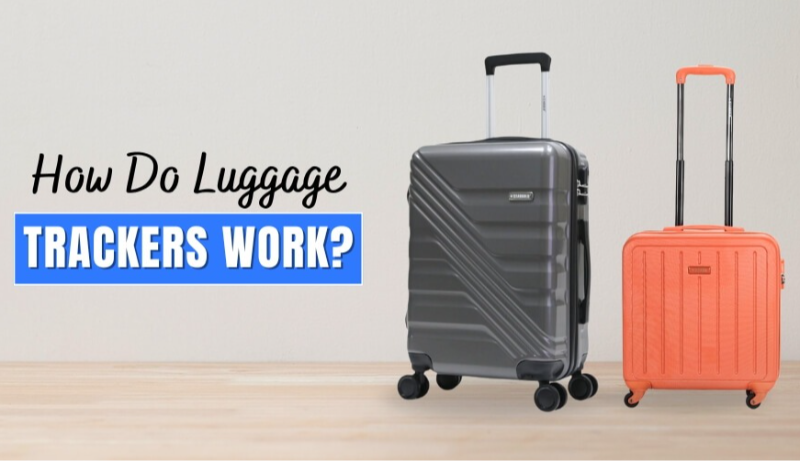
Most luggage trackers, like the AirTag and Tile Mate, rely on Bluetooth technology to communicate their location. Here’s a detailed explanation of how luggage trackers function and what makes popular models like the AirTag and Tile unique.
1. Short-range Tracking
When your luggage tracker is within Bluetooth range, typically up to 33 feet in real-world conditions (although some models claim a range of about 100 feet in ideal environments), it can send precise location data directly to your smartphone. For instance:
- You can open an app on your phone, like the Find My app for AirTag or the Tile app for Tile Mate, to see the exact location of your luggage on a map.
- If your bag is nearby but out of sight, both devices offer a feature that lets you play a loud sound from the tracker, helping you quickly locate it.
Short-range tracking is highly effective in settings like a hotel room, airport carousel, or even a packed overhead bin.
2. Long-range Piggybacking
The real advantage of luggage trackers shines when your bag is out of Bluetooth range. This is where each device’s network ecosystem steps in to expand its tracking capabilities:
- Apple AirTag relies on the vast “Find My” network. This ingenious system uses nearby Apple devices, such as iPhones, iPads, and even Macs, to anonymously detect the AirTag's signal and relay its location back to your Find My app. This ensures that even if your luggage is halfway across the world, you’ll still receive location updates as long as there’s an Apple device nearby. The best part? It all happens seamlessly and securely, with encryption to protect user data.
- Tile Mate operates on a similar principle but within the Tile ecosystem. The device connects with nearby smartphones, both iOS and Android, that have the Tile app installed. When another Tile user’s phone comes close to your tracker, its location is updated, and the information is sent to you discreetly. While the Tile network may not be as extensive as Apple’s, it still offers robust coverage, particularly in urban areas or regions where Tile is widely used.
But not all luggage trackers are created equal. Below, we’ll compare two of the most popular options to see how they stack up.
AirTag vs Tile Mate for Luggage Tracking
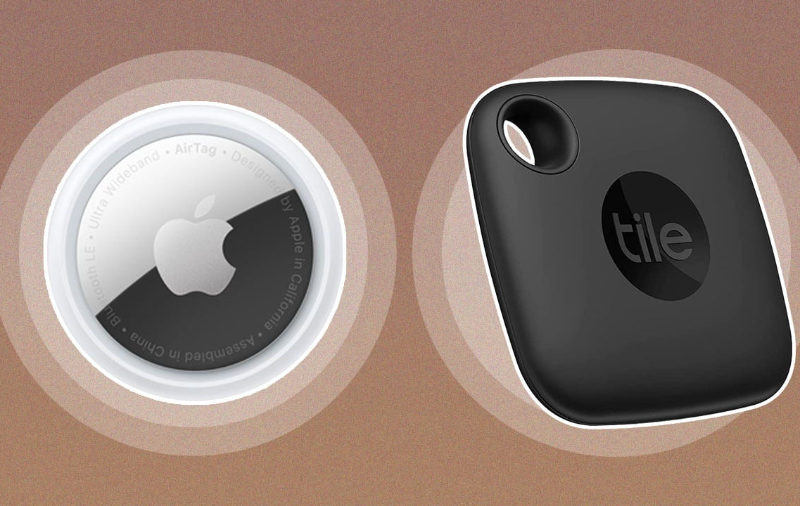
Apple AirTag
Best For
: iPhone users who prefer flawless integration and fast data transmission.
Key Features :
- Seamless setup with Apple devices.
- Extensive iPhone network for location updates.
- Replaceable battery (common watch battery).
- Compact, sleek design.
Limitations :
- Only works within the Apple ecosystem—no Android compatibility.
- Requires extra accessories (like a keyring attachment).
Tile Mate
Best For
: Android users (and iPhone users wanting a cross-platform solution).
Key Features :
- Compatible with both Android and iOS.
- Affordable, lightweight, and compact design.
- Built-in hole for easy keychain attachment.
- Works within a dedicated Tile network for location sharing.
Limitations :
- Smaller network compared to Apple’s ecosystem.
- Slightly slower response times.
- Non-replaceable battery with a lifespan of about two years.
Real-World Testing of AirTag and Tile Mate
AirTag Testing
During a test at busy transportation hubs, the AirTag impressed with its responsiveness. Thanks to the massive number of iPhones in circulation, the AirTag updated its location almost instantly. Setup was incredibly simple—requiring no additional apps—and the short-range Bluetooth range allowed spot-on pinpointing of exact locations.
Tile Mate Testing
The Tile Mate, in contrast, took longer to update its location. This delay was due to a smaller network of Tile users. However, when surrounded by crowds or in urban areas, it eventually delivered accurate updates. For Android users, the Tile Mate proved a reliable alternative, provided you’re in places where Tile users are present.
Both devices feature an audible alarm you can trigger when near your luggage, making retrieval even easier.
Are There Alternatives to AirTag & Tile?
Other luggage trackers exist, but most alternatives either rely solely on Bluetooth or lack a robust network for long-range tracking. For solo female travelers , this can mean gaps in coverage. If you're considering alternatives, ensure the tracker has a reliable piggyback system or offers GPS tracking for enhanced accuracy.
Key Considerations for Choosing the Best Luggage Tracker
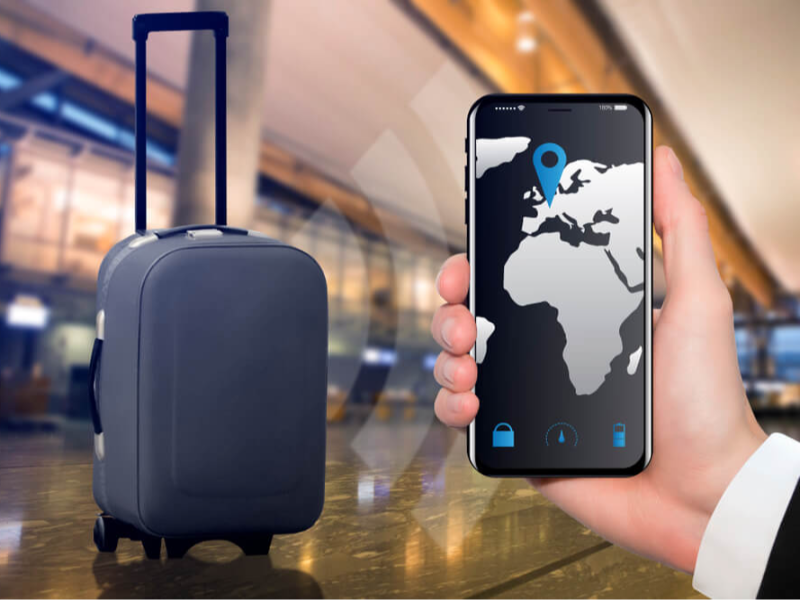
1. Device Compatibility
Are you an Android or iPhone user? Choose accordingly.
2. Battery Life
AirTag offers replaceable batteries, while Tile Mate provides a 2-year lifespan.
3. Range and Accuracy
While short-range Bluetooth works well for nearby tracking, a strong network like Apple’s or Tile’s ensures better results at airports and other long-distance scenarios.
4. Extra Costs
AirTag includes everything you need upfront. TileMate, while affordable, may involve optional service upgrades that aren’t always necessary.
Final Verdict
For iPhone users, Apple AirTag is an unmatched luggage tracker. It boasts superior compatibility, rapid location updates, and effortless integration with iOS devices, making it ideal for tech-savvy travelers.
For Android users, the Tile Mate is your best bet. While it may not offer as quick updates as AirTag, it still provides a reliable solution with added benefits like a built-in keychain hole.
Pro Tip for Solo Female Travelers
To further guarantee your luggage’s safety, consider traveling with carry-on luggage whenever possible. However, a reliable tracking device like AirTag or Tile Mate is invaluable for checked bags or when moving through busy cities.
For your next adventure, pack light, stay prepared, and keep a tracker handy. With tools like these, you can travel solo confidently and stress-free.
You may also want to know: The Ultimate Guide to Packing Light for Solo Travel



